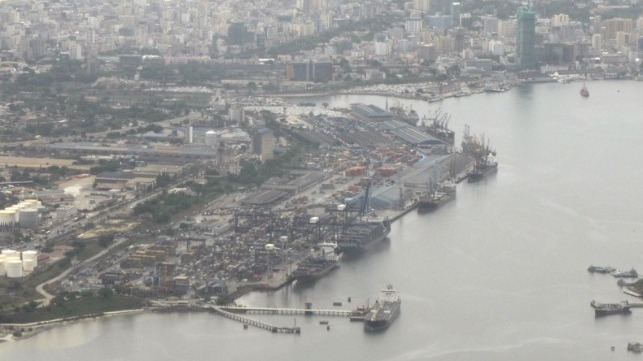The Growing Competition Between Africa's Seaports

Virtually every port in Sub-Saharan Africa has embarked on elaborate initiatives to boost relatively low capacity, as demand for cargo handling is expected to soar in the coming years with the growth of their economies. It’s already estimated that the overall container demands in these ports is expected to exceed the current total capacity between 2025 and 2030.
For instance, dry bulk-handling capacity gaps have started to emerge. The Port of Mombasa is expected to reach 30 million tons by 2050, and that of Dar es Salaam is estimated at 10 million tons and Durban at 5 million tons, according to a 2019 study by World Bank on eastern and southern African ports. In the case of liquid bulk, the capacity is already stretched in some ports. It is likely to be larger by 2050 in absolute terms at the Port of Djibouti at 18 million tons, Mombasa Port at 20 million tons and Dar es Salaam Port at 15 million tons.
This is what has spiked the infrastructural investment overdrive in African ports as operators look to cut these gaps in technical terminal operations. They form part of Africa’s current pipeline of $2.5 trillion worth of infrastructure projects expected to be complete by 2025. These projects have also seen China’s infrastructure commitment to Africa grow at an average annual rate of 10 percent from 2013 to 2017, according a McKinsey analysis. Besides providing financial support, China has also providing the much needed technical expertise in project execution, which could partly explain the reason why it is behind Africa’s most ambitious infrastructural developments.
These projects include the Horn of Africa’s new Djibouti mega port, which was jointly financed by Djibouti Ports and Free Zones Authority (DPFZA) and China Merchant Holding Company (CMHC). Chinese contractors were also behind Africa’s first electrified cross-border railway, a 470-mile stretch connecting the Djibouti port with neighboring Ethiopia.
However, there is a caveat in these elaborate projects to increase the maritime capacity of Africa’s ports. There are a number of factors that can undermine the realization of the full benefit of these capacity improvements, key among them being port competition. If overlooked, it can subvert the strategic ambitions of the ports in vying for the coveted position of transshipment and regional hubs in the respective areas they serve.
Geographically, Djibouti and Durban are best placed to develop into regional and transshipments ports in Sub-Saharan Africa due to their proximity to world’s major trading routes. Strategically located on the Gulf of Aden and at the entrance of the Red Sea, Djibouti enjoys an advantageous position along the main east-west shipping route and thus shipping lines are able to transship containers into East Africa without a huge deviation from their routes.
Currently, it acts as a gateway port for the neighboring Ethiopia where 95 percent of its cargo is handled while the remaining one pass through Mombasa and Port Sudan. However, port services competition in East Africa and the Horn of Africa are expected to be stiff after the completion of the $440 million Berbera port expansion in Somalia last month. The involvement of DP World in the management of the 500,000 TEU capacity port is considered as a factor that might woo shipping lines to import cargo through the port.
On the other hand, the development of Lamu port in Kenya is expected to capture cargo for Southern Ethiopia through the South Sudan and Ethiopia Transport corridor commonly abbreviated as LAPSSET. With Lamu port having far better maritime access and connectivity than Mombasa port due to its deep-berths and geographic location, the competition between the ports is considered minimal as they will be serving different transport corridors. Lamu port will primarily serve northern Kenya, South Sudan and Ethiopia while Mombasa port will focus more on the northern corridor linking landlocked Uganda, DRC and Rwanda.
Competition for Mombasa’s port will come from the neighboring Dar es Salaam port, 190 miles to the south, which in recent years has begun to manifest. After a heavy investment of $345 million from the World Bank, the Port of Dar es Salaam is rising as a tough competitor for Mombasa. In the first seven months of 2019, business between Kenya and landlocked Burundi significantly fell: a paltry 1000 tons was imported through Mombasa in 2019 as compared to 21,000 tons during a similar period in the previous year. This was the case because Burundi preferred to import its cargo through Dar es Salaam.
Depending on the competitiveness of strategy that each individual port takes, some will lose the monopoly control over cargo from their hinterlands that they currently enjoy, threatening the return on their investments in infrastructure and port operations technology. On the flip side, port competition will help unbind ports from the bureaucratic control of public entities as more governments consider privatizing their ports. This will also have the positive effect of driving down cargo handling costs from increased terminal efficiencies.
Brian Gicheru Kinyua is a regular contributor to The Maritime Executive Magazine.
The opinions expressed herein are the author's and not necessarily those of The Maritime Executive.
